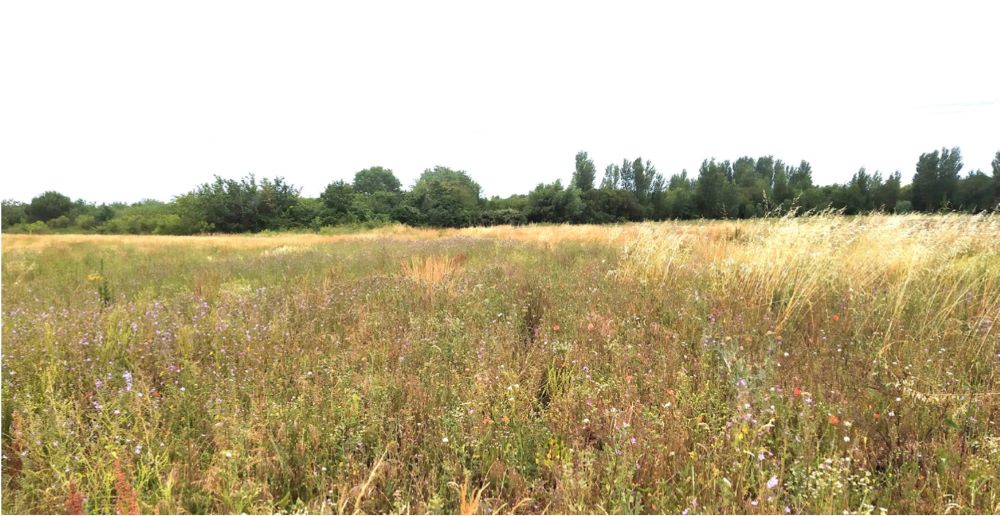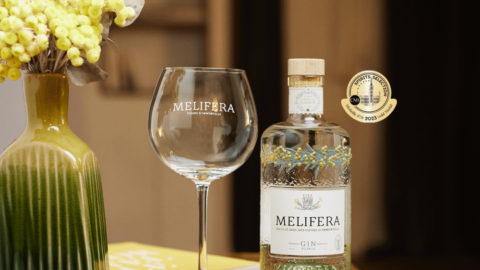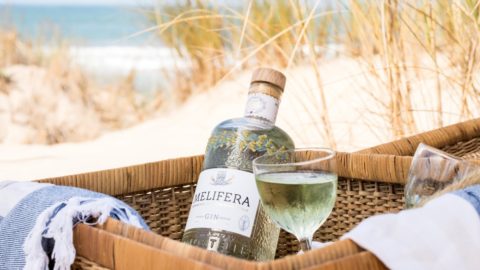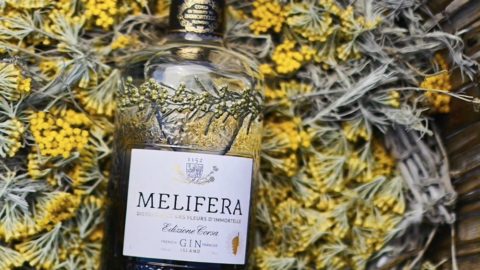©Melifera
A garden in agroecology: logbook of the « Jardin Melifera » (autumn 2021/winter 2022)
Let us take you on the beautiful adventure of the Jardin Melifera. This place serves as the immortelle flower production site for our gin – but not only – through which we aim to manage our commitments to the protection of biodiversity, according to the principles of agroecology. In this blog, I promise, Ethel, our biodiversity officer, will tell you everything you need to know. You will learn about our daily life, punctuated by nature and the seasons, our ambitions and our choices, our great successes as well as our hardships, our desire to do well, again and again, to tend as much as possible towards self-sufficiency, to support the development from the island of Oleron and much more… Ready to embark in our logbook discovery?
Agroecology as the founding principle of our commitment
It all started with the acquisition of lands on the island of Oleron. A two-hectare plot that we called Jardin Melifera and for which I was recruited, as a specialist in biodiversity and sustainability. Two hectares, I agree, it’s not very big. But the important thing for us is to manage them as well as possible and to make them into a real reservoir of biodiversity, through agroecology.
Ever heard of agroecology? In a few words, it is a set of production methods and agricultural practices that respect the environment. Agroecology is based on functionalities offered by ecosystems. It then acts as a sounding board to amplify them, while attempting to reduce pressure on the environment and preserve natural resources. Nature is used to the maximum as a factor of production, while maintaining its capacity for renewal.
©Melifera
Aim for self-sufficiency with new crops of botanicals
Having remained unexploited for more than 10 years, the plot was cultivated in organic market gardening and small fruits from 2017 and 2020. For several months, this plot remained untouched. Tall grass, wild flowers and bushy brambles had considerably developed.
The goal of the agricultural work, carried out this autumn, was to restore the land so that it could accommodate for new crops of perfume and aromatic plants (PPAM) in the spring, intended for the production of Melifera gin. Immortelle flowers, of course, but also other botanicals such as Angelica… Some varieties have also been chosen for their melliferous interest – this is the case of Agastache – or for their strong adaptation to the biotope (place of life) such as the Marshmallow, for example. The idea behind these plantations is to tend towards self-sufficiency as much as possible. Eric and Aline GIRARDOT helped us a lot on technical choices. These market gardeners, who cultivated the land they sold to us, remained the farmers of the site and valuable partners. They continue to bring their skills and know-how to the Melifera adventure.
The Jardin Melifera, real assets for production in respect to agroecology
The productions will be conducted in organic farming and our desire is to also have an agroecological approach in managing of the site: limitation of tillage, soil cover, developments favorable to biodiversity (country hedge, bramble, wetland, nesting boxes, perches…).
Naturally, the site already has real assets to work towards this, such as:
- soil with a sandy-clayey texture and a certain level of organic matter, stable humus and very good biological activity;
- areas of natural meadows, soft marshes, woods and wood edges of high ecological interest
To carry out the agricultural work, we called on local farmers and their equipment. This was a guarantee of local expertise and real know-how, but a nice headache in terms of planning! We had to adapt to several constraints: the weather, unforeseen events and the availability of farmers who have their own farm(s), all this in a busy period.
We’re not finished! As the site was previously a market gardening production site, it was necessary to remove the plastic sheets used for this type of crop. What a pain! Fortunately, we were able to benefit from the help of temporary workers, Yannick CHAUVET and Michel COULON, thanks to a collaboration with the ADCR of Saint-Pierre of Oléron (a local socio-professional support association offering temporary work assignments).
©Melifera
Preparing the land, know-how and key stages
On our two-hectare site, we can now consider that there are 3 types of spaces, managed differently: the growing space, the meadows, and the edge of the woods.
- Clearing and crushing
Given the state of undergrowth of the plot, we had no other choice but to proceed with its crushing and clearing. The autumn period is ideal for carrying out this work. Indeed, it involves little or no disturbance for biodiversity. In addition, we proceeded in several stages and sectors to allow time for the fauna to move.
The space that would accommodate the future plantations was crushed using a vine shoot crusher. This tool, relatively light, is suitable for small brushwood and allows the return of organic matter to the plot, via the degradation of elements left on the ground. It was Eric PRIEUR, from the “Jardin de la Josière” in Chaucre, who carried out this titanic work!
©Melifera
- Sowing and plant cover
The preparation of the soil is an important preliminary step for the establishment of PPAM. After carrying out a quick soil analysis, noting good biological activity, and the presence of earthworms (strong allies!), we decided to implant a plant cover for the winter.
Composed of organic labeled seeds, a mixture of oats, vetch (legume), phacelia, Alexandrian clover and Chinese radish, provided by the Agricultural Cooperative of the island of Oleron, it should meet our needs. Plant covers have real agronomic added value in the protection of soils and the improvement of their fertility, in the competition of weeds and in green fertilization (supply of nutrients in the soil for the following crops).
It was implanted a little late, unfortunately, which will somewhat reduce its benefits in the spring due to its limited development. The climatic conditions specific to Oleron nevertheless make it possible to do so. This avoids leaving the ground bare. We have also tried to “boost” its growth with a small addition of organic fertilizer (poultry droppings in granules).
The sowing of the cover was carried out by Eric THEMIER, of EARL Themier, polycultivators-breeders of Limousin cattle on the island of Oléron.
©Melifera
- Stubble cultivation and spreading
Sowing was carried out after stubble cultivation (via disc harrow and tine harrow).
This superficial operation of soil preparation for sowing consists of pulling up and burying the emerged plants, the fallen seeds and the stubble of a crop.
Although the soil is of good quality, we opted for a supply of organic matter and carbonaceous elements just before the implementation of the plant cover. Our objectives were: to reinforce the biological activity, the structuring of the soil and to create fertilizers with compost (from the Ecopôle on the island of Oleron) and shredded green waste type BRF (fragmented ramial wood) produced by the Bridier Staff company located in Grand Village Plage.

©Melifera
Incorporated into the soil, its decomposition, by microorganisms such as bacteria or fungi, will take place slowly and will provide extra woolen sock of carbon and other elements in inorganic form that can be used later by plants. During the planting of PPAM crops programmed in the spring (in April to be exact) it will not be useful to make any new amendments to the soil.
Stubble cultivation was carried out by Le Jardin de La Josière and EARL Themier.
The spreading of compost and RCW was carried out by David PRADERE (Vignoble Pradère) and Samuel MAGE (Vignoble Mage) using their vineyard manure spreader.

©Melifera
Good management of the meadow and the edge of the woods to preserve the ecosystem’s balance
The rest of the site is made up of natural meadows and a small part on the edge of the woods. The wood adjoining the plot also shelters a wetland, the soft marsh of Ponthézière.
Appreciated for their bucolic setting, these types of spaces also have an ecological value whose preserved balance is beneficial for our cultivation of perfume and aromatic plants.
In the field of biodiversity protection, the ecological and agronomic role of natural grasslands is essential. Particularly in the quantitative and qualitative management of water (floods and filtration), the mitigation of global warming, the provision of habitats for wildlife and birds, for pollinating insects and other crop auxiliaries or fodder for livestock… A true reservoir of biodiversity.
A transition zone between two different environments, the edge of the woods is also conducive to biodiversity, by hosting both forest species and species from open environments. An incredible meeting point that can also serve as travel routes for animals, real ecological corridors, but also as a favorable environment for their vital needs.
The soft marsh of Ponthézière, freshwater marsh, also offers beautiful biological diversity, sheltering several species of plants which have a strong heritage interest (marsh orchis, buttercup with Ophioglossus leaves…) and many birds.
Preserving and properly managing these spaces is part of our overall approach. The more we rely on nature, the less we need to artificially intervene in our cultures. The Jardin Melifera is fortunate to be part of a welcoming ensemble for biodiversity; which should indirectly contribute to the improvement of agricultural production.
Eco-grazing, the natural alternative to contain the dynamics of fallowing
The main challenge in these environments, meadows and edges, is to contain the dynamics of fallowing, to avoid uniformity and preserve ecological functionality. You should know that an untended meadow becomes a wood in 30 years.
As the edge of the woods of the Jardin Melifera is a fragile environment and difficult to access, maintenance by mechanical crushing did not seem appropriate to us (noise and potentially polluting), hence the solution of eco-grazing (or eco-pastoralism). A natural and economical alternative that contributes to a good biological life of the soil thanks to animal waste and it allows the maintenance of areas inaccessible to machines.
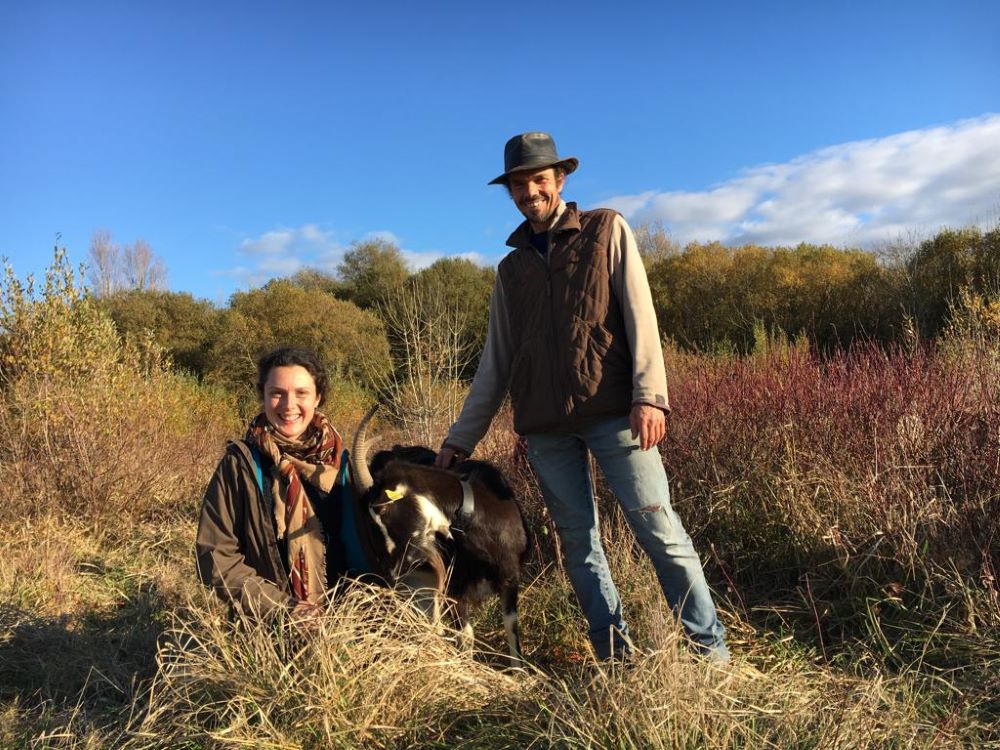
©Melifera
For this, we called on Nicolas Seguier and Oriane Pateau, owners of the farm “Les Anes d’Oléron” which, thanks to their diversified livestock (donkeys, goats, sheep), made it possible to clear the lands and maintain all types of environments and vegetation. In addition, the use of endangered breeds because of low numbers (Poitou donkeys, Poitevine goats) helps support the conservation of these species and the work of breeders. A support that is fully in line with the brand’s commitments.
To go all in with the process, and as the farm is only a few kilometers from the Jardin Melifera, we opted for a transfer of the animals by foot. The transhumance of “Marius and his 5 funny goats”, as well as Rose and her donkey Lultime, took place on Saturday 30 October.

©Melifera
Subsequently, sheep, other goats and other donkeys followed one another on the meadows to reduce vegetation and promote good recovery for spring. Grazing was done during the November-December period.
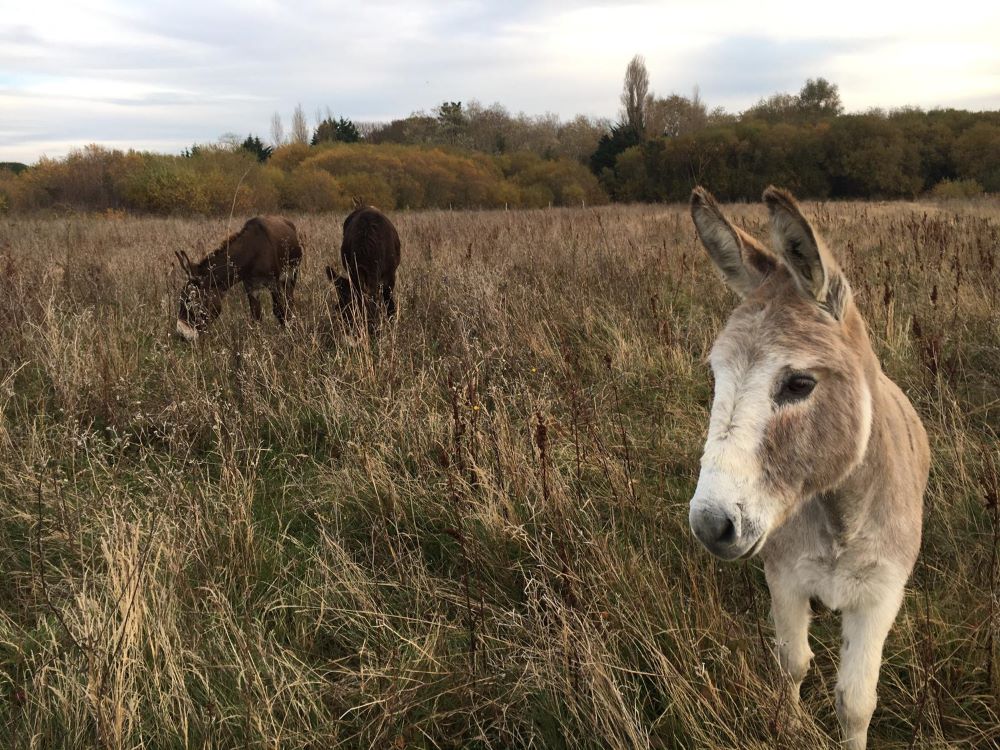
©Melifera
During that time, throughout the fall…
Located in an area classified as landscape – which is the case for all agricultural and natural areas on the island of Oleron – the agricultural plot of Melifera has a duty to preserve quality and remarkable areas in terms of landscape. All work likely to modify the condition or appearance of the premises of a site, is thus subject to the control of the Minister in charge of the sites or the Prefect of the department. Many administrative procedures are therefore necessary to present and validate the project. The constitution of the files and their instruction within the local and national administrative services require several months.
In order to offer a qualitative approach of the facilities set up on site, in Melifera fashion, we benefited from the expertise and the realization of sketches by Jean-Baptiste LACOMBE, landscape architect and manager of the company Lokal, and also a market gardener on the Ile de Ré.
For the rest…wait until spring!
Winter is an opportunity to develop crop planning for spring: types of plants, crop-plan, orders, choice of service providers… Our objective is to distribute the species grown in the field so that they are adapted to their requirements and their original biotope. For this, we rely on the valuable advice of producers of perfume, aromatic and medicinal plants.
Are you interested? Patience, soon you will know everything there is to know about the Jardin Melifera, just wait for Spring!


